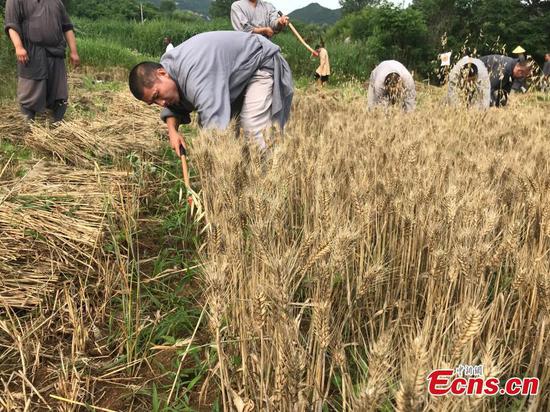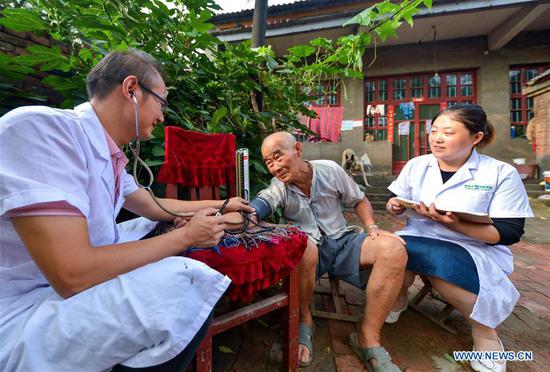
Monks from the Shaolin Temple harvest wheat at a farm in Dengfeng, Henan province, June 21, 2018. (Photo/China News Service)
An international research team has recently completed the first sequence of the hexaploid bread wheat genome and published the results on Science magazine, and Chinese scientists joined in the research on the chromosome 7DL.
Compared to other crops, deciphering wheat genome is more complicated, since the high-repetitive hexaploid wheat genome is five times as large as human genome and 40 times of rice genome.
The International Wheat Genome Sequencing Consortium separated the 21 chromosomes of bread wheat Chinese Spring in 2005 and established relative bacterial artificial chromosome libraries for teams to shoulder relative work.
The Chinese team led by Song Weining, professor from the State Key Laboratory of Crop Stress Biology for Arid Areas in NWAFU, shouldered the work to decipher, assemble and order the chromosome 7DL.
Song said that it is a brand-new exploration in the construction of the wheat genomic physical mapping and deciphering, and the size of chromosome 7DL is as large as the whole rice genome.
The workload was much heavier than rice genome sequencing, but under support from the government and other relative programs, the team finally finished the mapping and sequence deciphering work in about 10 years, he said.
The mapping will give researchers the codes in better mastering the rule of wheat growth and development and is significant for selective breeding.


















































